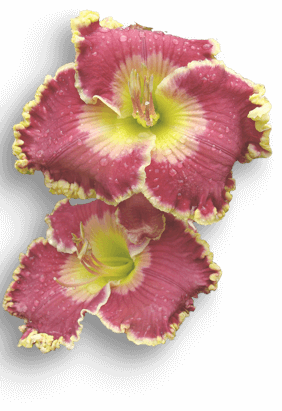One of the two major types of flowering plants, or angiosperms. The monocotyledons are so named because the embryo in the seed has a single cotyledon (seed leaf). The cotyledon may remain in the seed after germination as in a daylily, or emerge above the soil surface as in an onion.
Most monocots have parallel veins in their leaves. (Trillium is an example of a monocot that does not have parallel leaf veins.). Their flowers, as found in nature, usually have three sepals, and petal count is usually three or multiples of three. (One exception is grasses, which have a totally different floral structure.)
Examples of monocotyledons are the grasses, such as rice, corn, wheat, and sugar cane. The palms, orchids and lily families are also examples of monocotyledons. Daylilies are monocots. See also: Dicotyledons.

